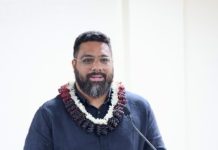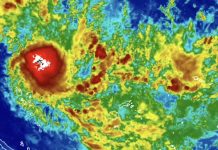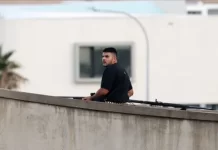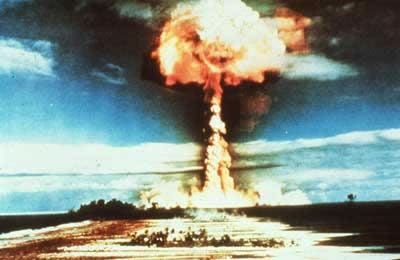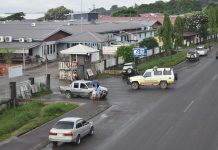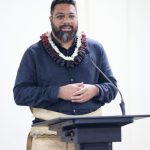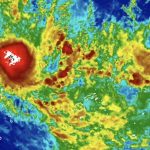This Wednesday, New Zealand marks 50 years since the Government sent a frigate to French Polynesia to protest testing of nuclear weapons at Mururoa Atoll.
On 28 June, 1973, HMNZS Otago sailed from Auckland, carrying a crew of 242 and immigration minister Fraser Colman – the first commitment from prime minister Norman Kirk to stand against atmospheric nuclear testing in the Pacific.
Glenis Philip-Barbara, Pou Mataaho o Te Hua, deputy chief executive delivery at Manatū Taonga, Ministry for Culture and Heritage, said this historic action had followed two years of protests from across Aotearoa and the world.
“The Otago joined vessels from Aotearoa, Australia, Tahiti, Fiji, Samoa and Peru which had previously sailed to French Polynesia to protest nuclear testing,” Philip-Barbara (Ngāti Uepōhatu, Ngāti Porou) said.
In July 1973, the crew aboard the Otago witnessed the first atmospheric nuclear test, Philip-Barbara said.
“Colman transferred to HMNZS Canterbury when it arrived to relieve Otago, and he and the crew saw the second atmospheric test on Mururoa.”
Following the protest, the New Zealand and Australian governments, Solomon Islands, Marshall Islands, Micronesia and Samoa, took France to the International Court of Justice.
In 1974, French president Valéry Giscard d’Estaing decided that future tests would be held underground.
“The efforts of those who sailed to the Pacific, both on civilian vessels and the veterans of HMNZS Otago and Canterbury, were a key part of Aotearoa becoming nuclear-free,” Philip-Barbara said.
“Civic activism paved the way for our political leaders to make a strong international statement on this issue.
“The sailing of HMNZS Otago into Pacific waters at this time confirmed that the Government was listening to the voices of the people.”
Sending the Otago to Mururoa was also a key moment in Aotearoa’s diplomatic relationship with other Pacific nations, Philip-Barbara said.
She said the move also emphasised New Zealand’s responsibility to champion voices from across Te Moana-nui-a-Kiwa, the Pacific Ocean.
“This anniversary is an opportunity to reflect on the legacy of these protests and how they shaped the Pacific nation we live in today.”
The New Zealand Nuclear Free Zone, Disarmament and Arms Control Act was passed in 1987, making Aotearoa officially nuclear-free after 14 years of protest.
For Mururoa, it would be some time before nuclear activity ceased with the atoll remaining a focus of anti-nuclear protests until the final underground explosion in 1996.
Defence Minister Andrew Little told a summit in Singapore on 02 June that New Zealand’s nuclear-free stance was not “wishful thinking” and Kiwis would gear up to “defend our free and democratic way of life”.
Little said there was “no ambiguity” in New Zealand’s position on nuclear weapons, and its nuclear ban would remain, including for nuclear-powered vessels.
Little’s comments followed Aotearoa’s only formal defence ally, Australia, which plans to obtain nuclear-powered submarines in the coming decades through Aukus – a trilateral security pact between Australia, the United Kingdom and the United States.
At a Labour campaign launch in September 2017, a month before her ascent to New Zealand’s top job, Jacinda Ardern said: “There will always be those who say it is too difficult. That we are too small, and that pollution and climate change are the price of progress.
“They are wrong. We will take climate change seriously, because my government will be driven by principle and not expediency and opportunity and not fear.
“This is my generation’s nuclear-free moment, and I am determined that we will tackle it head on,” Ardern said.
On 01 March, Nuclear Free and Independent Pacific Day, marked the 69th anniversary of the ‘Bravo’ nuclear bomb detonation by the U.S close to the surface of Bikini Atoll, Marshall Islands, which blasted out a crater more than 200 feet deep and a mile across.
SOURCE: STUFF NZ/PACNEWS


